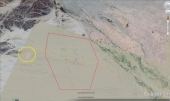banana circles would be a good start. If you actually make banana "horseshoes" with the open of the horseshoe uphill it will catch and store your water during the rainy season and then overflow when full. Fill the pits with lots of mulch for the dry season. You can do the same with papaya circles.
As ground cover, you can do sweat potato, yams etc. I use strawberries at the base.
Also try other high value fruits such as Pitaya. This method of cutting the top off an old coconut and placing wood crisscross over the top is great. 3-4 plants on each tree trunk
I would also focus on hot chilis as you can process them yourself and make hot sauce. The more processing you do on site the more value.
Swales and ponds would be a great start. You can fill the swales with mulch, and it will help keep the moisture during the dry season









